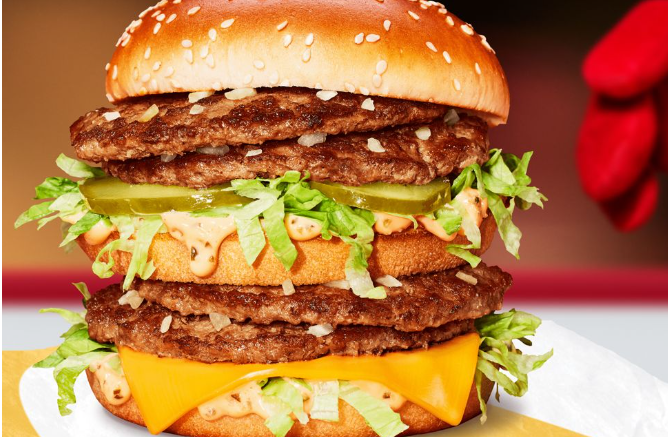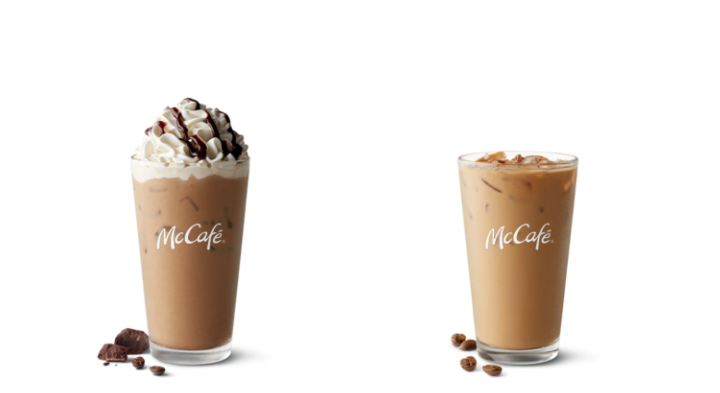

In a world that’s increasingly health-conscious, the golden arches of McDonald’s have become synonymous with both delight and concern. Embarking on a journey towards a healthier lifestyle involves not just mindful eating but also a fundamental understanding of the building blocks of nutrition—calories and macros. In this in-depth exploration, we delve into the intricacies of these nutritional components, demystifying the role they play in our overall well-being.
What Are Calories?
Calories, in the realm of nutrition, are units of energy derived from the foods we consume. Understanding the calorie content of various foods is crucial for managing weight, energy balance, and overall health. Calories serve as the energy currency our bodies need to function. Consuming more calories than we burn leads to weight gain, while a caloric deficit results in weight loss. It’s a delicate balance that requires awareness of the energy content in the foods we choose.
The Importance of Nutrient-Dense Calories
Not all calories are created equal. Nutrient-dense calories come from foods rich in vitamins, minerals, and other essential nutrients. Focusing on nutrient density ensures that our bodies receive the necessary elements for optimal functioning, beyond just energy.
Understanding Macronutrients
(Macros)Macronutrients, or macros, are the major nutrients our bodies need in larger quantities. The three primary macros are proteins, carbohydrates, and fats. Proteins play a pivotal role in cell repair, muscle building, and overall body maintenance. Sources like meat, dairy, and plant-based proteins offer diverse options for meeting daily protein requirements.
Carbs are the body’s preferred energy source, fueling vital functions and physical activities. Distinguishing between simple and complex carbs helps optimize energy levels and maintain stable blood sugar. Contrary to the misconception that fats are harmful, they are crucial for nutrient absorption, hormone production, and brain function. Understanding the distinction between saturated, unsaturated, and trans fats aids in making informed dietary choices.
Macdonald’s Calories and macros for every menu item in 2024

Welcome to the ultimate breakdown of McDonald’s calories and macros for 2024. Explore guilt-free indulgence with a detailed analysis of each menu item, empowering you to make choices aligned with your nutritional goals. We understand the importance of making informed choices about what goes into our bodies, so let’s dive into the nutritional breakdown of every menu item at McDonald’s in 2024.
1. Big Mac Breakdown: Unravel the layers of the iconic Big Mac, weighing in at approximately 550 calories. With its balanced macros, this classic delivers a satisfying blend of protein, carbs, and fat, proving that indulgence can still be mindful.
2. Golden Goodness Fries: Delve into the crispy world of McDonald’s fries, where a large order packs around 71 grams of carbs. It’s time to balance your meal, knowing the delicious cost of this golden delight.
3. Grilled Chicken Sandwich Spotlight: Craving protein without the guilt? The Grilled Chicken Sandwich boasts a lean 36 grams of protein, making it a smart choice for those focused on fitness and flavor.
4. Southwest Grilled Chicken Salad Showcase: For a wholesome meal, our Southwest Grilled Chicken Salad steals the spotlight. At just 350 calories, relish the balance of 29 grams of protein, 27 grams of carbs, and 15 grams of healthy fats.
5. McFlurry Magic: Indulge your sweet tooth wisely with the McFlurry, offering a dessert experience at 620 calories. Discover the delightful union of soft-serve and M&M’s, all while being mindful of your nutritional intake.
6. McDouble’s Muscle Fuel: Looking to maximize protein intake? The McDouble emerges as a powerhouse with approximately 23 grams of protein. Learn how this burger elevates your protein game while maintaining that signature McDonald’s taste.
Refreshing Beverages Nutrition Information

1. Diet Coke (Medium): – Calories: 0, Protein: 0g, Fat: 0g, Carbs: 0g
2. Strawberry Banana Smoothie: – Calories: 210 – Protein: 2g, Fat: 1g, Carbs: 49g
Building a Balanced Meal
Now that we’ve laid out the numbers, let’s talk strategy. Opt for grilled chicken options and salads for a protein-packed, lower-calorie lunch. Pairing a classic Egg McMuffin with apple slices can be a satisfying, balanced breakfast. Remember, moderation is key.
Conclusion
In 2024, McDonald’s continues to evolve its menu to cater to diverse dietary needs. Understanding the nutritional content of your favorite items empowers you to make choices aligned with your health goals. So, the next time you’re under the golden arches, you can indulge wisely and savor every bite without sacrificing your nutritional awareness. Cheers to informed dining!
Frequently Asked Questions
1. What’s McDonald’s low-calorie and macros?
McDonald’s offers several low-calorie options, such as the Grilled Chicken Sandwich, which typically has around 370 calories. This sandwich provides a balanced macronutrient profile with approximately 36 grams of protein, 43 grams of carbohydrates, and 9 grams of fat, making it a relatively healthy choice on the menu.
2. What’s Macdonald’s healthiest macros?
For a well-balanced and healthy macronutrient option at McDonald’s, consider the Southwest Grilled Chicken Salad. With around 350 calories, it includes grilled chicken, mixed greens, black beans, corn, tomatoes, and a chili-lime vinaigrette. This salad offers a satisfying mix of 29 grams of protein, 27 grams of carbohydrates, and 15 grams of fat.
3. What’s the most proteinous Macdonald’s menu item?
The McDouble stands out as one of the highest-protein menu items at McDonald’s, providing approximately 23 grams of protein. This burger features two beef patties, American cheese, pickles, onions, ketchup, and mustard, delivering a hearty protein content while also contributing to the overall caloric and fat intake.*
